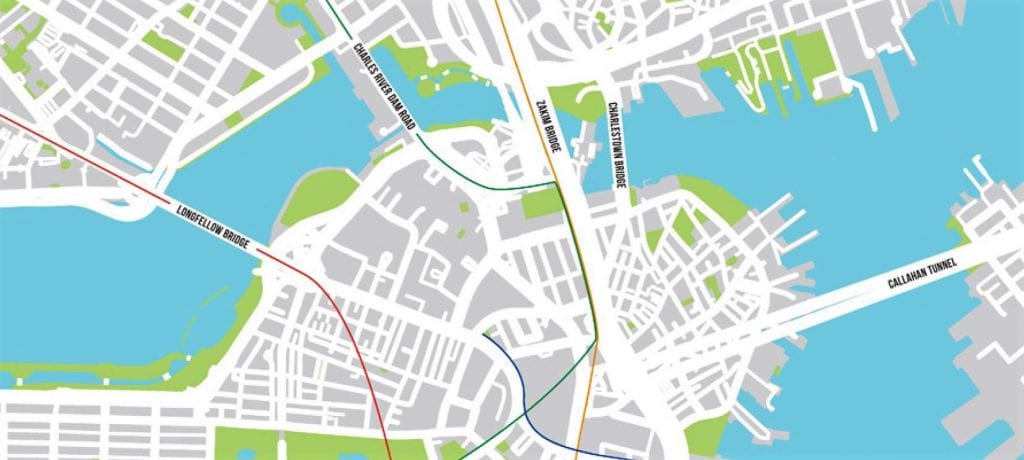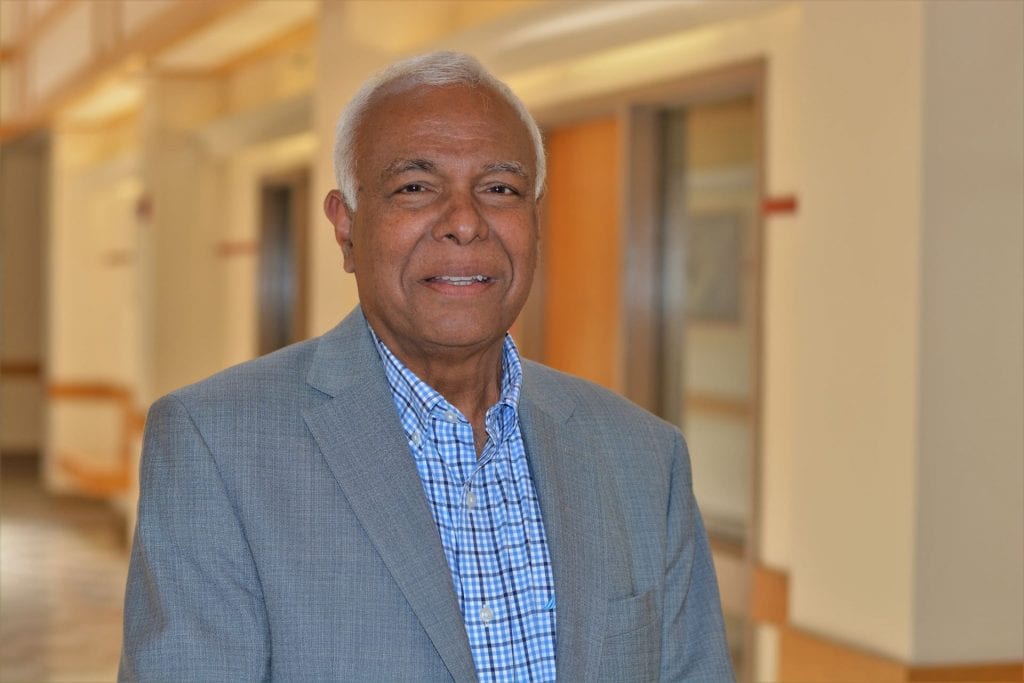By Chuck Leddy
It was about two years ago when the City of Boston released Go Boston 30, an ambitious transportation plan that included 58 infrastructure projects the city wants to see completed. They ranged from MBTA station upgrades to roadway improvements to new ferry routes and bike corridors to extending the Green and Orange Lines.
Ever since President Trump proposed spending $1 trillion to reconstruct roadways, waterworks, and bridges, infrastructure went from a wonky term to a buzzworthy one. There’s one problem: “Everybody agrees we need to do something about infrastructure,” says Ilyas Bhatti, a Douglas C. Elder Professor of Construction Management at Boston’s Wentworth Institute of Technology. “But now they’ve got to draft the action plan. That’s where the problems come into play, in the details. It all sounds very good, but how do we make it work?”
Putting lessons to work
A logical place to start is at the nation’s colleges, where students learn how to apply classroom lessons in the working world. At Wentworth, professors and students have spent time studying everything from the cleanup of the Charles River to the logjams of MBTA trains to the condition of the Emerald Necklace string of parks.
“We are providing students with academic rigor combined with the opportunity to work on real-world projects, through MassDOT [Department of Transportation] and DCR [Department of Conservation and Recreation],” says Bhatti. “The university’s students learn what it takes to get a project done, not only technically but also from a financial standpoint.”
Another example is what Civil Engineering and Technology Professor James Lambrechts (also an endowed Douglas C. Elder Professor) and his students did a few years ago in studying the rush-hour mess on the MBTA’s Green Line. They proposed to the MBTA a detailed plan to get people into the city faster with a Blue Line extension that would reduce a redundancy in the system.
“The Green and Red Lines have big problems,” says Lambrechts, “but the Blue Line is actually underutilized. A Blue Line extension to Riverside would take pressure off the Green Line, especially if the Green Line itself gets extended.” Lambrechts and his Wentworth students presented a full report to the MBTA on the Blue Line extension project last year, he says, and “it’s been listed as the highest rated extension idea (among 20) in the MBTA’s ‘Focus40’ report.”
This sort of experiential educational model at Wentworth falls under an initiative called EPIC—for externally collaborative, project-based, interdisciplinary culture. Its chief purpose is to help students to learn inside and outside the classroom, through real projects that bring businesses and students together.
EPIC learning promotes innovative thinking and collaborative approaches to infrastructure challenges. “Our students are exposed to the constraints and possibilities of each field and can better imagine solutions; it’s a highly collaborative work model,” says Mark Pasnik, a professor of architecture at Wentworth. Wentworth, in particular, is perfectly situated to fill this gap in the infrastructure world. At a time when cities are taking a hard look at their mass transit systems, Wentworth’s campus in Boston sits steps away from the tracks of the nation’s oldest subway system, a system constantly in need of upgrades, expansions and maintenance.
“Our students are exposed to the constraints and possibilities of each field and can better imagine solutions; it’s a highly collaborative work model.”
–Mark Pasnik, Wentworth Professor of Architecture

Passing grade. Barely.
Students aren’t the only ones being graded these days. The American Society of Civil Engineers issues an annual report card. The 2017 ASCE grade for infrastructure is a D+, saying much of the country’s infrastructure is “poor” or “at risk.”
“We can no longer afford to defer investment in our nation’s infrastructure,” the organization says. “To close the $2 trillion, 10-year investment gap, meet future need, and restore our global competitive advantage, we must increase investment from all levels of government and the private sector.”
Easy to say. But in today’s gridlocked Washington, hard to do. Even after extreme weather events have placed massive stress on infrastructure in places like Texas, Florida, and Puerto Rico. Locally, severe winter weather has placed additional stress on the MBTA’s aging and underfunded infrastructure.
“We’ve deferred maintenance over the last few generations on the vast infrastructural projects of the past,” explains Pasnik. The need for infrastructure investment has only accelerated due to recent extreme weather: “Whether you want to call it climate change or extreme weather, it’s taking a huge toll on existing infrastructure that wasn’t really designed to deal with these extreme changes in climate,” says Bhatti.
A big city like New Orleans, for example, has faced massive infrastructure problems with its levees and water pumps, which have been exacerbated by weather emergencies such as Hurricane Katrina in 2005 and Hurricane Harvey this year.
Many infrastructure experts advocate combining engineering with other sciences to develop a more holistic, resilient solution to the nation’s infrastructure challenges. Wentworth Architecture Professor Mark Klopfer emphasizes “the importance of wetlands and constructed wetlands to assist in times of flooding.”
He says engineered solutions for coastal erosion such as man-made barriers, or revetments, often simply transfer the erosion further down the beach and only exacerbate the very issues they seek to resolve.

Ilyas Bhatti
Infrastructure as a career path
While an apparent lack of political will and insufficient planning are major hurdles to any prospective national infrastructure plan, another obstacle is a lack of interested and qualified people to get the actual work done. Construction contractors are confronting shortages of the skilled talent, and competition for skilled labor and engineering professionals would only intensify once a national infrastructure initiative kicks off.
“We don’t have enough human capital, on a national basis, and we are lagging behind in training our workforce for dealing with the problems of rebuilding infrastructure,” says Wentworth’s Bhatti.
And, he said, waiting isn’t an option. He pointed to what happens when infrastructure is neglected by using a 2007 tragedy as an example. “Look at what happened in Minneapolis a decade ago, with the bridge that collapsed into the Mississippi River, killing 13 people,” Bhatti said. “We can’t have those tragedies happening, because they’re preventable.”
The American Road and Transportation Builders Association, which monitors the number of bridges with structural defects in each state, backs up Bhatti: ARTBA has found 55,710 bridges across the nation that need to be repaired or replaced.
Massachusetts alone has nearly 600 bridges that are “structurally deficient.” And look no further than the prominent Longfellow Bridge connecting Boston and Cambridge. Badly in need of repairs, the $255 million repair project is now expected to cost more than $300 million and is nearly two years behind schedule.
For projects like that, having the right people, with the proper training, is vital. “And that’s where Wentworth and other institutions of higher learning can play a vital role,” Bhatti says.

